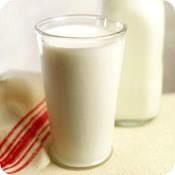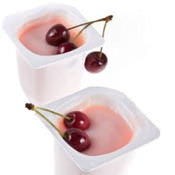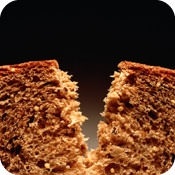One of the best things about supermarkets can also be the most confusing: all the choices! When walking from aisle to aisle, it can be overwhelming to look at all the products in each section. Just think of all the choices when you’re looking at the entire wall of cereal or a large cooler packed with tiny yogurt cups! Trying to find the best item—especially when you're trying to eat healthier or watch your intake of calories, fat or sodium—is not always a walk in the park.
Within each section of the grocery store, you'll find plenty of healthful foods that can help you reach your goals. But sometimes you have to make a food choice based on budget constraints, availability or taste preferences that isn't ideal. Not to worry. This "Good, Better, Best" guide will help you make the best possible choices on your next trip to the store. If you're new to eating healthy, start at the bottom and work your way up to the top of the lists over time. Even if all you can afford is in the "good" category, you're still doing pretty well. If you prefer the taste and texture of the "better" item to the "best" choice, that's OK, too. Or maybe you're facing a hotel breakfast buffet or trying to find something healthy to eat at a party and all you'll find is the "good" choice. No matter what your situation, you'll still be able to make the best possible choices by using this simple guide.
 |
MILK |
| Good |
Better |
Best |
| 2% milk |
1% milk |
Skim milk |
| It has 3 fewer grams of fat than whole milk, yet still offers calcium, vitamin D, magnesium, and protein for your body. It's a useful stepping-stone as whole- and vitamin D-milk drinkers make the healthy transition to low-fat dairy. |
With a mere 2 grams of fat per cup, it slashes the fat found in 2% milk by more than half. This lower-fat version of milk still has 30% of the daily dose of calcium, as well as vitamin D. |
It's fat-free, yet provides about the same amount of calcium and protein as higher-fat options. This is the best choice, especially for heavy milk drinkers. Skim milk may take some getting used to because it’s thinner, but it has lower amount of saturated fat and your heart will love that. |
 |
YOGURT |
| Good |
Better |
Best |
| Low-fat |
Low-fat + fortified |
Plain nonfat Greek |
| Low-fat yogurt is made with skim or low-fat milk, which cuts calories and fat but still provides calcium and protein. Beware of added sugar (plain yogurt, flavored with fruit or topped with whole-grain cereal is your best bet). |
A great up-and-coming trend in the yogurt aisle is supplementing yogurts with vitamin D. There aren’t many food sources of vitamin D, which helps in immunity and cancer prevention, so this is a great way to get an extra dose. |
This plain, thick, smooth yogurt has 21 fewer grams of sugar and 60 fewer calories than it's fat-free, flavored counterparts but still leaves in a great amount of protein, calcium and vitamin D. Get our expert recommendations for the best yogurts. |
 |
BREAD |
| Good |
Better |
Best |
| Whole grain |
100% whole wheat |
Light 100% whole wheat |
| Bread "made with whole grains" usually contains a mix of refined flour and whole grain flour. It has a lighter texture and taste than whole wheat, making it a good choice for people who are transitioning from white bread to 100% whole-wheat bread. While it's lower in fiber, it is usually enriched with vitamins and minerals. |
Bread made with 100% whole wheat doesn't contain any refined or enriched flour. It's less processed and higher in fiber than white bread and whole-grain breads. Make sure "whole wheat flour" is the first ingredient on the label or else it's an imposter! |
This combines 100% whole wheat with calorie control. Some of the whole-wheat varieties can pack up to 100 calories per slice. Light whole-wheat bread can help you cut up to 130 calories from your sandwich if you're watching your weight. Here's how to pick the best bread. |
 |
CEREAL |
| Good |
Better |
Best |
| Cereal without marshmallows, bright colors or clusters |
Whole-grain cereal |
Whole-grain cereal that's low in sugar |
| If you're going to eat cereal, avoid those made like desserts (with marshmallows, clusters, chocolate flavors and bright colors). Cereals that meet these criteria are enriched with vitamins and minerals (better than nothing), but they are highly processed, full of sugar--sometimes up to two tablespoons per serving--and seriously lacking in fiber. |
A cereal made with whole grains is a better choice, but don't believe anything you read on the front of the box. Look for whole grains to be the #1 ingredient on the nutrition label and make sure there is at least 3 grams of fiber per serving. Kashi Cinnamon Harvest and Kashi Autumn Wheat are good options that contain 6 grams of fiber per serving. |
The best cereal is made from whole grains and very little sugar (5 or fewer grams per serving). Grape Nuts and Total are good examples. If you’re used to cereal with more sweetness, add fresh berries or sliced fruit to help you get your 5-a-day. Get SparkPeople's top cereal picks here. |
 |
PASTA |
| Good |
Better |
Best |
| Durum wheat pasta |
Whole-wheat pasta |
Omega-3 enriched whole-wheat pasta |
| Standard spaghetti noodles, made from durum wheat, aren't inherently unhealthy. They're slightly less processed than semolina pasta and contain some protein and plenty of carbohydrates for energy. But durum wheat flour is refined and stripped of important nutrients like fiber. |
Whole-wheat noodles contain more fiber and protein per serving, while providing energy-giving carbohydrates. Load them up with vegetables and low-fat tomato sauce for a nutritious meal. |
Get more nutrition per bite with whole-wheat noodles that are enriched with omega-3’s. Commonplace in most supermarkets, they provide all of the goodness of whole-wheat pasta with an added dose of heart-healthy Omega-3 fatty acids. |
| Good |
Better |
Best |
| Chicken or turkey slices |
Low-sodium lean meats |
Whole cuts of meat (preferably homemade) |
| Buying lean deli meat cuts like chicken or turkey is better than bologna, salami and processed meats, which are higher in fat and sodium and contain nitrates, which are believed to be carcinogenic. |
Low-sodium lean meats are better choices for your sandwiches. Look for a low-sodium version of your favorite lean lunch meat (such as turkey or chicken). |
Purchasing your own skinless chicken or turkey breast to grill or bake, then slice is the best way to go. It's lower in salt, less expensive, and won't contain any of the additives of processed or packaged meat slices--and you can cook it yourself to reduce the fat and calories, depending on your method. |
With all the options in the grocery store, it’s easy to find items to feel good about buying. But remember: Healthy eating isn't about perfection. All foods do have some merits and even if you can't eat ideally all the time, that's OK. By striving to make the best choices from what is available to you, you'll make a real difference in your health!
This article has been reviewed and approved by SparkPeople resident expert Becky Hand, Licensed and Registered Dietitian.
|






.jpg)





